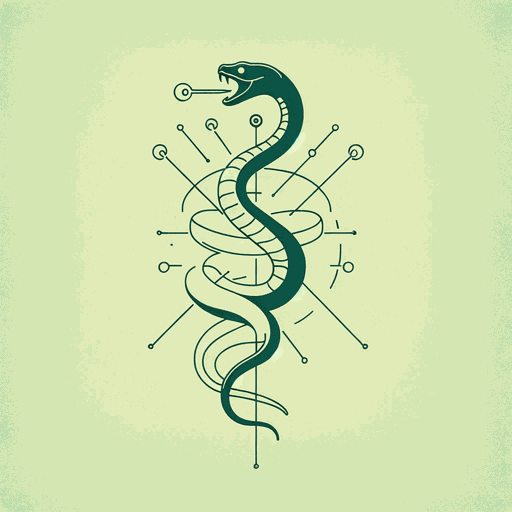49 pages • 1 hour read
Suzanne CollinsThe Ballad of Songbirds and Snakes
Fiction | Novel | YA | Published in 2020A modern alternative to SparkNotes and CliffsNotes, SuperSummary offers high-quality Study Guides with detailed chapter summaries and analysis of major themes, characters, and more.
Summary and Study Guide
Overview
A prequel to Suzanne Collins’s The Hunger Games trilogy, The Ballad of Songbirds and Snakes tells the coming-of-age story of future president and villain Coriolanus Snow. Published by Scholastic Press in 2020, this young adult dystopian/soft sci-fi novel depicts an earlier Panem, the fictional country in which the annual Hunger Games take place, and details the contest’s cruel evolution. As introduced in the first three books and four film adaptations, the Games force a total of 24 young men and women to fight to the death. The last survivor secures ample food and riches for their impoverished district—hence the moniker “Hunger” Games. This contest serves as both punishment and reparation to the all-powerful Capitol: The 12 districts each sacrifice two of their children, one boy and one girl, as the blood price of their failed rebellion.
Plot Summary
The Ballad of Songbirds and Snakes details the Tenth Annual Hunger Games as Coriolanus Snow turns 18 and worries about his future. The Snows, once wealthy and powerful, are practically no more after the deaths of Coriolanus’s mother and military father, the latter killed during the districts’ failed rebellion. Coriolanus and his cousin Tigris live with their grandmother whom the latter calls “Grandma’am.” While the novel can be read as a coming-of-age story, it also serves as an origin story, recounting a seemingly ordinary individual’s transition to villainy.
Part 1, “The Mentor,” opens with Coriolanus Snow preparing for a reaping, the day in which Capitol representatives select the Hunger Games’ 24 tributes. For this year’s Games, the Capitol tasks its students with mentoring the tributes in an attempt to boost viewership and reinforce their power. Coriolanus is disappointed upon being paired with the girl from District 12—as readers of The Hunger Games may note, the district from which protagonist Katniss Everdeen hails—considered the last and “most backward” of the 12. But to his surprise, 16-year-old Lucy Gray Baird proves a hit. A natural entertainer, Lucy Gray manages to charm the Capitol with her beautiful voice and bold personality; she claims to be “Covey,” a member of traveling performers rather than a district native. Part 1 details the lead-up to the Games, including the inhumane treatment of tributes, the deaths of tributes and mentors alike, and the use of genetic modification in creating weapons. The amoral Dr. Gaul adores her “muttations,” like the enhanced snakes that come to play a significant role both in and outside of the arena. At the conclusion of Part 1, Lucy Gray saves Coriolanus’s life in a terrorist bombing and requests repayment by means of winning the Games.
Over the course of mentoring Lucy Gray, Coriolanus falls in love with her. Part 2, “The Prize,” showcases their complicated relationship and the ways in which the country’s inequality shapes it. The remaining tributes enter the arena where all but one suffer a horrific death, whether from poisoning, rabies, or blunt trauma; Lucy Gray survives. As it turns out, Coriolanus helped her win by suggesting she poison the competition and providing protection from Dr. Gaul’s snakes. Those in charge of the Games deem Coriolanus’s assistance “cheating” and he is slated for punishment.
In Part 3, “The Peacekeeper,” Coriolanus is sent to District 12 as a “police officer.” The Peacekeepers prove disinterested in the locals, preferring to drink to excess; for Coriolanus, his assignment is no better than execution. He then comes across former classmate and rival Sejanus Plinth who hopes to rescue a prisoner and flee as part of a plot—presumably to fan the flames of rebellion. The plot also includes Lucy Gray’s ex-boyfriend, Billy Taupe, and his current fling, the mayor’s daughter Mayfair. Both Billy and Mayfair are killed, the latter by Coriolanus himself. A rebel secures the murder weapons, but is eventually caught by Peacekeepers. With his fate as a “rebel” all but sealed, Coriolanus joins forces with Lucy Gray once more.
Ultimately, Coriolanus betrays Sejanus who is subsequently hanged. This decision gains him favor with the Capitol; however, Coriolanus instead decides to flee with Lucy Gray—who is in danger of losing her life to the mayor’s vendetta–sacrificing his supposed last chance at becoming an officer. During their escape, they come across a Covey rest stop. Here they find the murder weapons, hidden by the rebel before his arrest. Coriolanus realizes that his future is still within reach, just as his companion recognizes her position as a loose end. A hunt ensues as Coriolanus seizes his last chance at glory. He fires upon Lucy Gray—though he never finds her corpse—and sinks the weapons in the lake. He is free to return to where he belongs.
The Epilogue reveals that Coriolanus returned to the Capitol to attend University. He is recognized as Dr. Gaul’s favorite acolyte and “adopted” by the Plinths, who finance his ventures and support his remaining family; they know nothing of his betrayal of their son Sejanus. Coriolanus muses on the fate of Lucy Gray and the nature of love, concluding that he dislikes the feeling as it made him vulnerable. He reveals his ambitions to lead Panem and uphold the Hunger Games for years to come. His final act comprises poisoning Dean Highbottom, a former friend of his father’s and an obstacle to his power.
Coriolanus’s name reverberates throughout history. Like the Latin-derived names of the Capitol and Panem’s upper class, “Coriolanus” belongs to that of an actual historical figure from ancient Rome—later made infamous by a Shakespeare play of the same name. The historical Coriolanus was known for his disdain for the common folk and his ultimate treachery against Rome, obsessed with his own self-image. Collins provides a worthy facsimile in Snow, using his entitlement and education in oppression and violence to explain his morality—or rather, there lack of. The novel opens with epigraphs from philosophers Thomas Hobbes, John Locke, and Jean-Jacques Rousseau as well as writers William Wordsworth and Mary Shelley. These quotations hint at Collins’s themes of freedom, government, and the ways in which humans treat one another within various social contexts—all fair game unlike the inherent unfairness of her Hunger Games.
Related Titles
By Suzanne Collins





